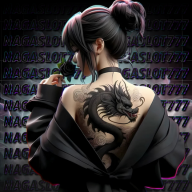NAGASLOT777 : Agen Bonus New Member 100% Slot777 Paling Dicari Tahun 2025
NAGASLOT777 : Agen Bonus New Member 100% Slot777 Paling Dicari Tahun 2025
Nagaslot777 Nagaslot777 adalah agen situs slot gacor dari slot777 dapat melakukan deposit via qris hanya 1 detik dan dapat langsung claim bonus 100% atau bonus menarik lainnya dengan keuntungan yang tidak ada di situs judi lainnya yaitu bebas ip.
-
Smart Speakers
-
With Screens
-
Alexa on the go
-
Kindle E-Readers
-
Video Doorbells
-
Security Cameras
-
Accessories
-
Wi-Fi 5
-
Wi-Fi 6
-
Wi-Fi 7
Customer reviews
5 out of 5
stars
5
out of 5
777.777 global
ratings
-
Top reviews
Top reviews
There was a problem filtering reviews right now. Please try again later.
Reviewed
on 10 Januari
2025
Mantap Nih Nagaslot777 Baru Depo 100rb Dapat Maxwin 15Juta!!
Reviewed
on 9 Desember
2024
Rtp gacor parah winrate 98%, sekali main langsung turun perkalian besar.
Reviewed
on 26 Desember
2024
Sudah saya ajak 5 teman saya bermain disini, semuanya Jp tidak ada zonknya termasuk aku, makasih Nagaslot777!



